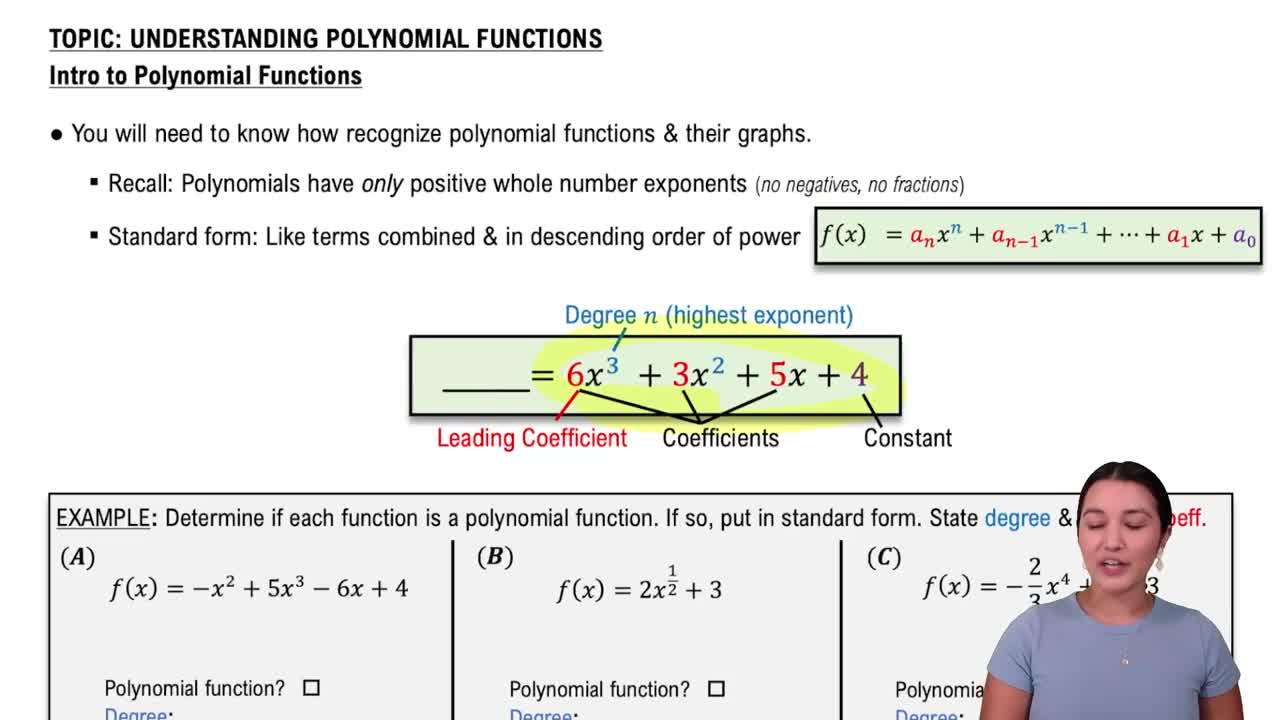Here are the essential concepts you must grasp in order to answer the question correctly.
Polynomial Functions
A polynomial function is a mathematical expression involving a sum of powers in one or more variables multiplied by coefficients. The degree of a polynomial is the highest power of the variable in the expression. For example, in the polynomial f(x) = 2x^6 - 3x^4 + 5, the degree is 6. Understanding polynomial functions is crucial for analyzing their properties, including the number and nature of their roots.
Recommended video:
Introduction to Polynomial Functions
Real Coefficients
Real coefficients in a polynomial mean that all the coefficients of the terms are real numbers, as opposed to complex numbers. This characteristic influences the behavior of the polynomial's graph and its roots. For instance, a polynomial with real coefficients can have complex roots, but they must occur in conjugate pairs. This concept is essential for determining the possible zeros of the polynomial.
Recommended video:
Introduction to Polynomial Functions
Roots and Zeros of Polynomials
The roots or zeros of a polynomial are the values of the variable that make the polynomial equal to zero. A polynomial of degree n can have up to n roots, but these can be real or complex. In the case of a polynomial with real coefficients, it is possible for a degree 6 polynomial to have no real zeros if all its roots are complex. This understanding is key to evaluating the truth of the statement in the question.
Recommended video:
Imaginary Roots with the Square Root Property



